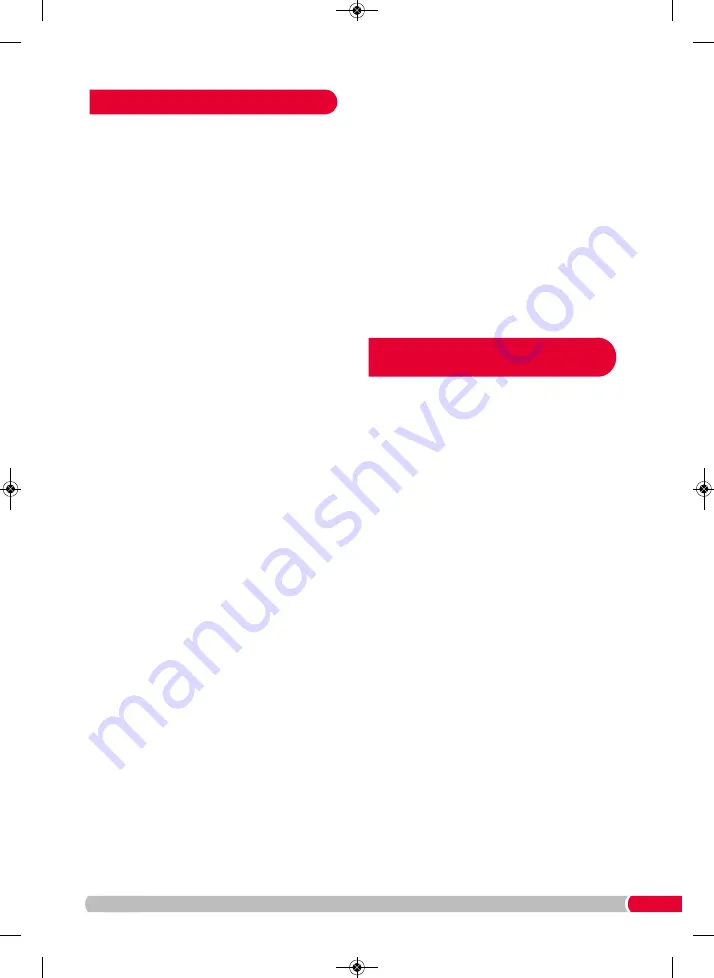
7
•
In traditional stove top slow cooking, it is advised
to coat the meat in flour before browning. There is
no need to do this in this slow cooker. Simply
sear / brown the meat as instructed. If the liquid
needs to be thickened, add and stir in a corn flour
/ cold water paste mix 30 minutes towards the
end of the cooking time.
•
If required pour off excess oil after browning.
•
The Slow Cooker must be at least half full for best
results.
•
Many recipes will take several hours to cook. If
you don’t have time to prepare food in the
morning, prepare it the night before, storing the
food in a covered container in the fridge. Transfer
the food to the Cooking Pot and add boiling
liquid/stock. In most of the recipes in this book,
the meat ingredients are browned first to improve
their appearance and flavour.
•
If you are short on preparation time and would
prefer to skip the searing stage, simply add your
meat and other ingredients into your Slow Cooker
and cover with boiling liquid/stock. You will need
to increase the recipe cooking time as follows:
High s1hr, Medium s1-2 hrs, Low
S2-3hrs.
•
Ingredients should be evenly distributed
throughout the Cooking Pot. However, root
vegetables are better placed in the lower half of
the pot to start cooking. All ingredients should be
immersed in the cooking liquid.
•
Do not over fill the Cooking Pot
(3)
, as the recipes
in this instruction booklet are designed for
maximum capacity, and allows room above the
food for even cooking. Fill to within 2cm from the
top of the Cooking Pot.
•
If cooking soups, leave 5 cm gap from the rim of
the Cooking Pot
(3)
and the food surface to allow
for simmering.
•
Most meat and vegetable recipes require 8-10
hours on Low, 6-8 on Medium and 4-6 hours on
High.
•
Adapting existing recipes from conventional
cooking to use in a slow cooker may require
reducing the liquid used, as liquid does not
evaporate to the same extent.
•
Slow cooking retains moisture. If you wish to
reduce liquid, remove the lid after cooking and
turn the control to High. Reduce the moisture by
simmering for 30 to 45 minutes.
•
Removing the Glass Lid
(2)
will allow heat to
escape, reducing the efficiency of your Slow
Cooker and increasing the cooking time. If you
remove the lid to stir or add ingredients, you will
need to allow 10-15 minutes extra cooking time
for each time you remove the Glass Lid.
•
Many things can affect how quickly a recipe will
cook, including water and fat content, initial
temperature of the food and the size of the food.
Check food is properly cooked before serving.
•
If you are cooking half quantities, cooking time
can usually be reduced to two thirds. Check that
the food is thoroughly cooked before serving.
•
All food should be covered with a liquid, gravy or
sauce. In a separate pan or jug, prepare your
liquid, gravy or sauce and completely cover the
food in the Cooking Pot.
•
Please handle the Glass Lid
(2)
and Cooking Pot
(3)
carefully to ensure long life.
•
Avoid sudden, extreme temperature changes to
the Glass Lid. For example, do not place a hot lid
into cold water or onto a wet surface.
•
Avoid hitting the Glass Lid against any hard
surfaces.
•
Do not use the Glass Lid if chipped, cracked or
severely scratched.
•
Do not use abrasive cleansers or metal scouring
pads.
•
Never heat the Cooking Pot when empty, when
searing or browning add the meat as soon as the
oil is hot.
•
Never place the Glass Lid or Cooking Pot under a
grill, in the oven, in a microwave or toaster oven.
•
Never place the Glass Lid directly on a burner or
hob.
•
Do not use metal utensils when searing or to stir
food in the Cooking Pot as this will scratch and
remove the non stick coating. Use either
wooden or silicone plastic utensils.
•
Do not put the Cooking Pot or Glass Lid in the
dishwasher. No parts are dishwasher safe.
Caring For The Glass Lid
And Cooking Pot
Slow Cooking Tips
460751 Rev 2.qxp_Layout 1 27/07/2015 10:19 Page 7


































